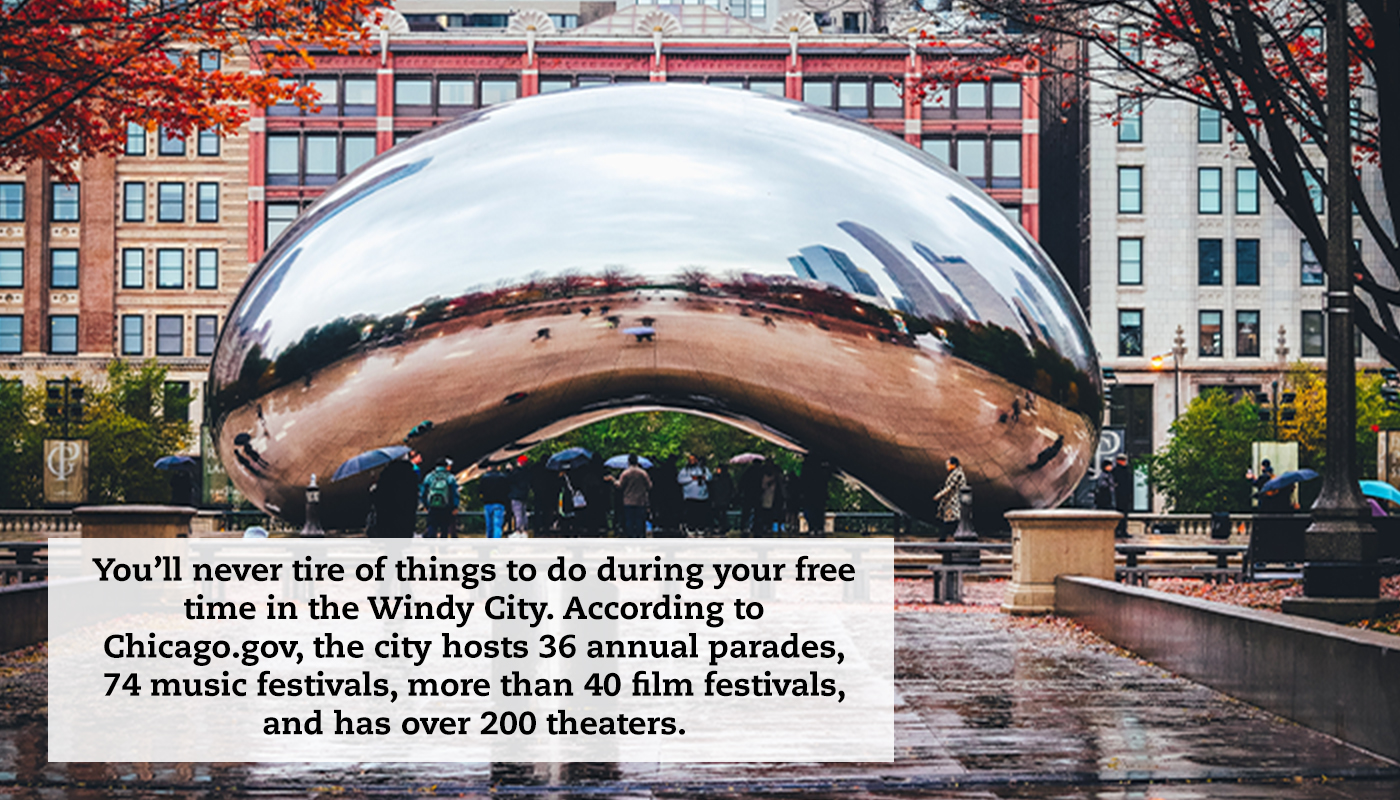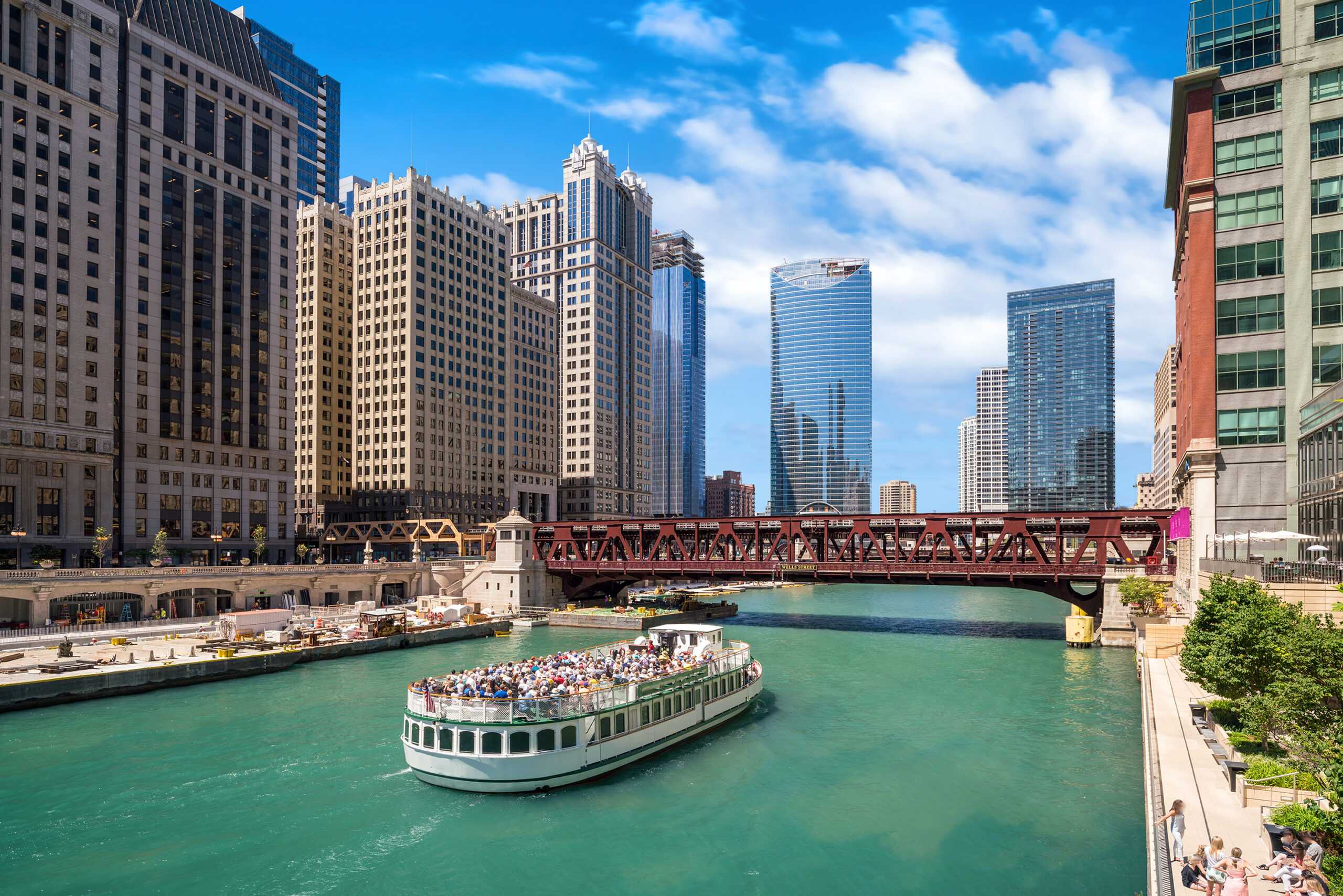So, you’re planning on renting an apartment for the first time in Chicago? You’re undoubtedly excited, and you should be. You’ll never tire of things to do during your free time in the Windy City. According to Chicago.gov, the city hosts 36 annual parades, 74 music festivals, more than 40 film festivals, and has over 200 theaters.
And with more than 7,000 restaurants in the city, you’ll never run out of places to eat and drink.
As a first-time renter, you may be wondering how to prepare for your move. It never hurts to get a feel for rent conditions in Chicago well ahead of your move. Here are five tips for first-time apartment renters in the Chicago area:
1. Careful Budgeting
Be a little conservative about how much rent you can afford. A good rule of thumb is to spend no more than one-third of your gross monthly income on rent. There are markets (like Los Angeles and New York City) where renters spend an average of 40% or more of their gross monthly income on rent. At under 30%, Chicago is more in line with national norms. When appropriate, consider one or more roommates to expand your purchasing power.
The “50-30-20” rule is another guide. About 50% of adjusted gross income goes to pay recurring monthly expenses. Another 30% goes to pay nonrecurring or miscellaneous expenses. The final 20% goes into savings or a “rainy day” fund.
The first month’s rent is often due at lease signing. There are various fees and deposits to consider as well. Examples include the application fee, a security deposit (or move-in fee), and any pet-related fees. The security deposit is typically refunded after you move out, less any deductions for cleaning and damage. By contrast, a move-in fee is often non-refundable.
Also, factor in the cost of renters insurance. A renters insurance policy includes property coverage and personal liability coverage. It is often possible to save money by bundling your auto and renters insurance policies. Don’t forget to plan for utilities, moving expenses, and for the cost of furnishing your new living space.
2. Conduct a Diligent Neighborhood Search
Chicago is the nation’s third-largest city. Its 2.7 million residents live in more than 100 distinct neighborhoods. To zero in on an ideal place to live, consider the following:
- Your commute to work, if any
- Distance to restaurants, shopping, theaters, etc.
- Preferred transportation: driving, biking, walking, or public transportation
- Relative cost to live in preferred neighborhoods
According to Zumper, the average one-bedroom apartment rents for $1,840 in the city. Rents do vary from one neighborhood to another. For example, in Chicago’s South Loop, the average for a one-bedroom is $1,995. In the River North area, the average is $2,427.
3. Determining Needs vs. Wants
As you begin your apartment search, create a checklist of needs and wants. Distinguish between the things you must have and things you’d like to have.
Popular amenities include high ceilings, stainless steel appliances, stone countertops, and a washer/dryer unit. Tenants may value community amenities like a pool, rooftop deck, outdoor kitchen, fitness center, yoga room, and coworking areas. Of course, if you own pets, a pet-friendly community is a must.
Chicago has the second largest number of commuters by bike in the country. If you plan to become one of them, look for communities catering to those with bicycles. Some offer bike storage and even bike repair stations.
Will you have a personal vehicle at your new apartment home? Is parking “first come, first served”, or is a spot reserved for you? Some complexes include a parking space in the rent, perhaps in a lot or in a garage. This eliminates the hassle of looking for street parking, particularly in the winter. Or, it saves you the expense of monthly fee parking costing $200 to $300 or more per month.
Finally, note that some amenities may actually reduce your costs elsewhere. An onsite fitness center, for example, eliminates the need to pay for a costly gym membership. The same is true of a guaranteed parking spot.
4. Taking Tours: Virtual and In-Person
Start a more focused search for your next apartment home about 60 days before your preferred lease start date, as landlords generally don’t know which units will become available until then. Pre-screen your options via 3D virtual tours. If you are moving from afar, the 3D tour takes on added significance. If you can make it to Chicago, arrange for walking tours of your top choices. Be proactive and arrive to the tour with a list of important questions to ask the property manager.
Self-guided tours make it possible to visit a community on your own time. For example, Tour24 is an award-winning platform that partners with multifamily developments to simplify access. It provides prospective renters with a custom interactive and audio/visual tour experience after hours, on weekends, or at other convenient times.
During an in-person tour, get a sense of an apartment’s layout and all its features. Pay close attention to community amenities as well. Get a sense of the community’s vibe. Drive or walk around to get a feeling for the neighborhood.
Be clear about who pays for which utilities. Landlords often pay for water and waste disposal, whereas tenants generally pay for electricity, heat, and cable/internet. If you are renting for the first time, you’ll need to set up accounts. Keep in mind that responsibilities do vary from one apartment community to the next so when in doubt, ask your property manager.
Be aware of the lease term. Twelve months is the most common. And remember, a lease is a legal contract—only sign it when you are truly ready to do so. See to it that anything promised during the walking tour is included in the lease before make a commitment.
5. Settling In
Use this move-in checklist to simplify the process of settling in. Use your smartphone’s camera to document the condition of the unit when you arrive and when you move out. Take advantage of every opportunity to connect with your neighbors. You’ll be in a better position to help one another during trips out-of-town, for example, and you’ll be on your way to building a community of friends in your new home.
About Draper and Kramer
Draper and Kramer’s luxury rentals are the perfect choice for first-time renters. Enjoy popular amenities that take apartment living to another level and experience exemplary customer service. Browse Draper and Kramer’s complete selection of luxury apartment rentals in Chicago today.

Chicago is the nation’s third-largest city. Its 2.7 million residents live in more than 100 distinct neighborhoods.